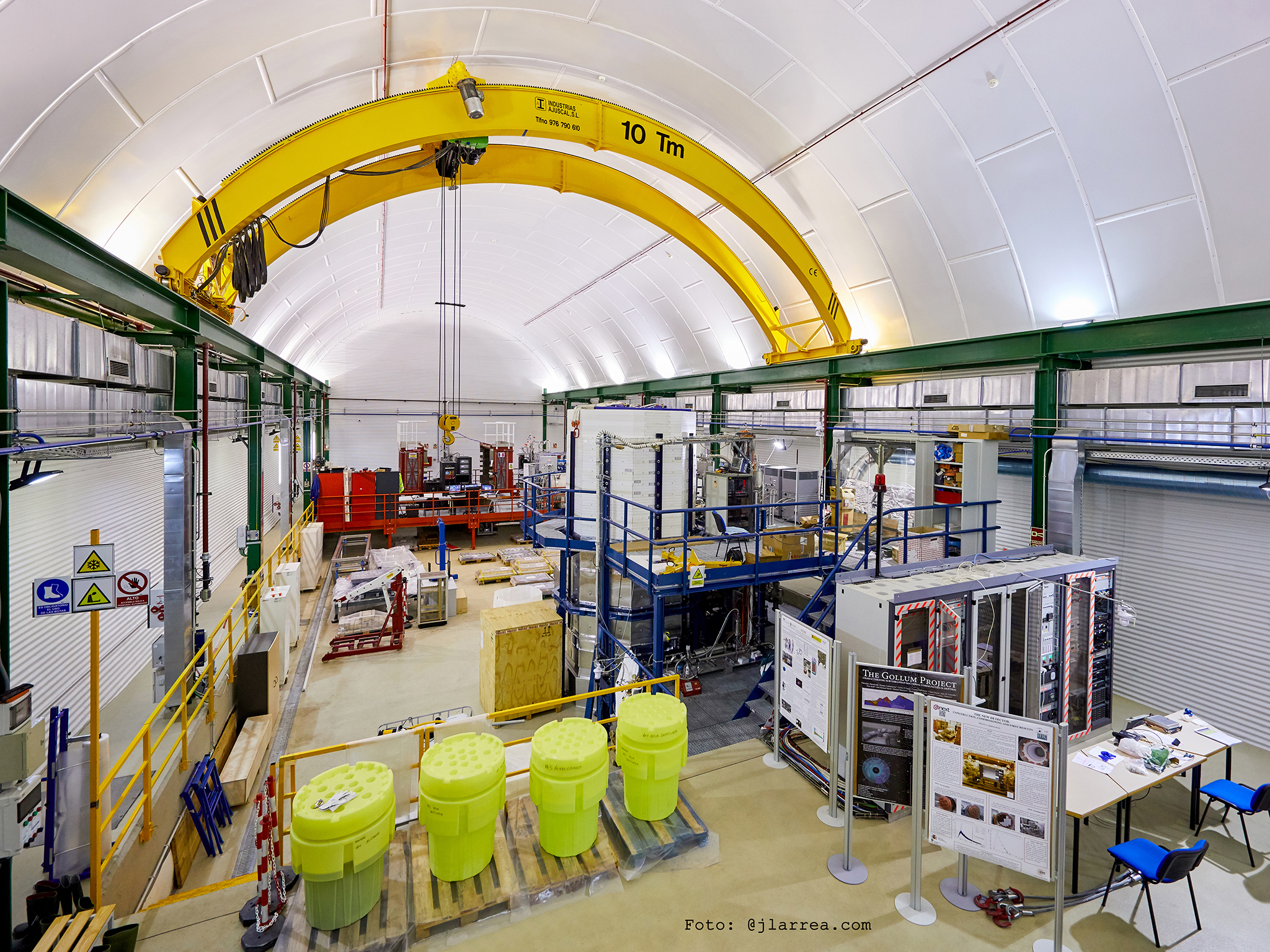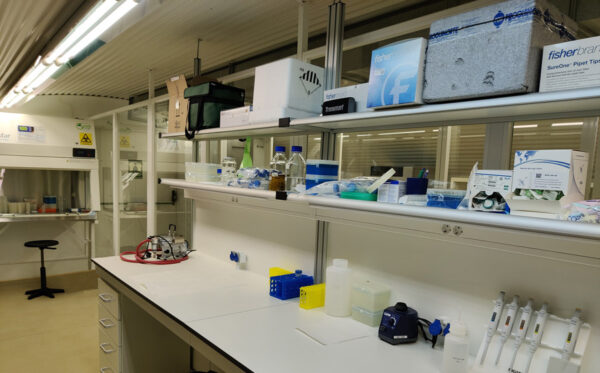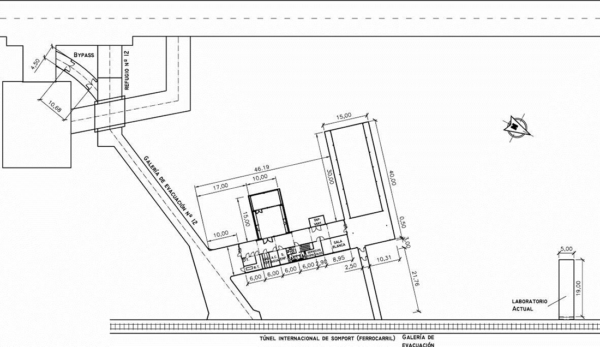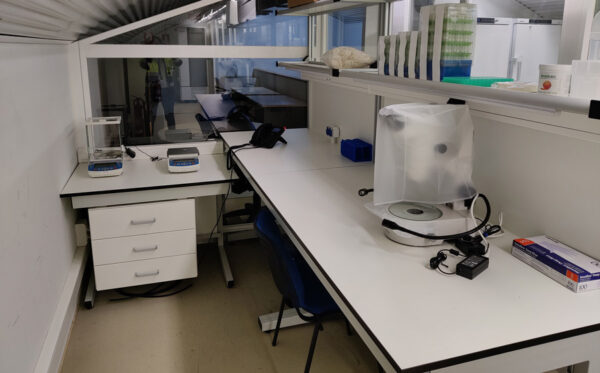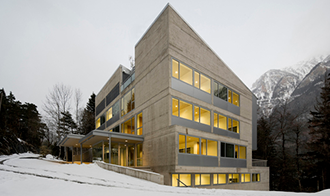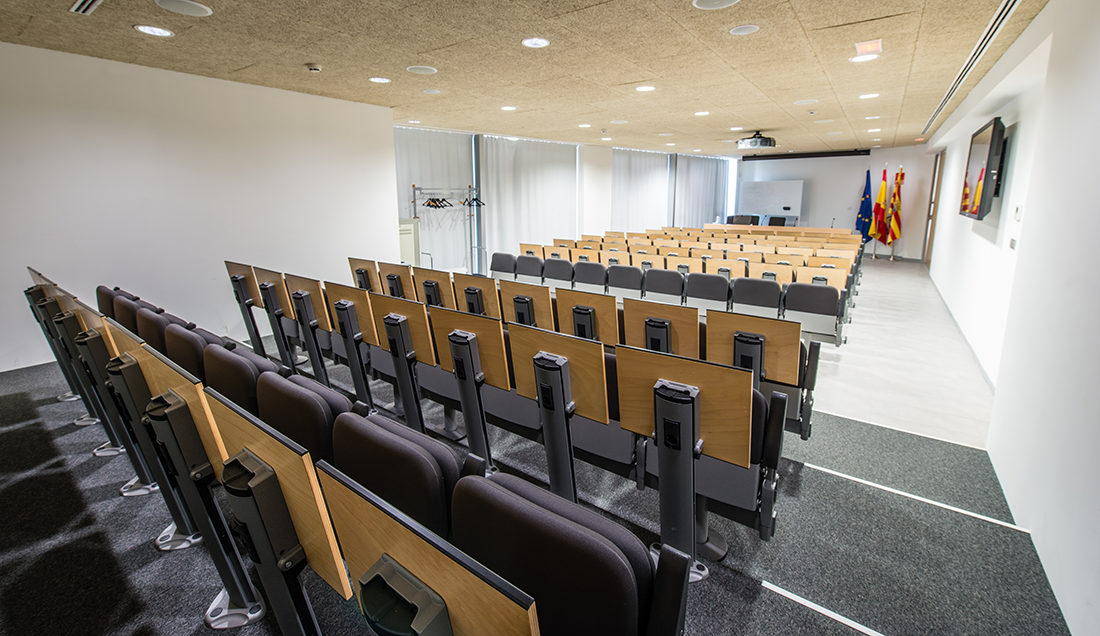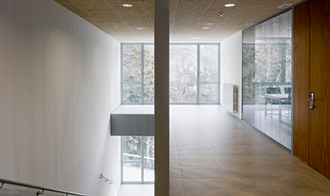The experimental halls of the Laboratorio Subterráneo de Canfranc (LSC) have been excavated in the rock 800 m deep under the Mount Tobazo in the Spanish side of the Aragon Pyrenees. The rock filters the cosmic radiation providing the “cosmic silence”, which is necessary to study rarely occurring natural phenomena such as the interactions with an atomic nucleus of neutrinos of cosmic origin or of particles of the invisible “dark matter”. Dark matter provides 85% of the mass of the Universe, but we do not know what it is made of.”
The LSC’s total area is about 1.250 m² corresponding to a volume of about 10 000 m³ and it has two experimental halls (40x15x12 m³ and 15x10x7 m³) in which the experiments are distributed as well as offices, a clean room a mechanical workshop and gas storage room.
In addition, the LSC has a Biology Platform created with the aim of hosting biology experiments in a low-radiation background environment. It has surface and underground facilities that allow experiments to be replicated in the presence or absence of radiation, with the aim of studying how different types of radiation (gammas, muons and neutrons) affect the metabolism of different biological models. The Platform is also equipped with a clinostat to host experiments in microgravity conditions below ground.
The LSC headquarters and administration external building has 16 offices for scientific users, 9 offices for LSC personnel and 4 specialised laboratories as well as a mechanical workshop and storage room, meeting, conference and exhibition rooms and 2 apartments.
The LSC also has a new museum which is located in the “Casa de los Abetos”, this building, which belongs to the Consortium, is located overground opposite the headquarters building. As well as the museum it holds an auditorium, where the open talks for the visits are given, and two classrooms. Visits to the museum can be arranged through the Tourism Office of Canfranc Estación.


